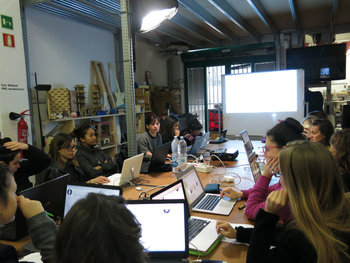|
| |
Innovation is an approach to change that seeks revolution over improvement. Businesses that innovate are able to leapfrog the competition by creating designs, technologies, processes, capabilities and experiences that are an order of magnitude better than the current state of the art.Innovation typically requires an elevated level of risk taking as it's hardly possible to revolutionize an industry by thinking conservatively. As such, innovation risk is considered a special category of risk whereby a business expects regular failures as it tries many things to see what works.High Probability, Low ImpactEarly stage innovation risks are unique in that they are usually high probability, low impact. Early stage innovation involves experiments that are essentially expected to fail. At this stage, risk management is focused on the design of experiments to fail cheaply and safely. This is typically a lightweight process that involves reviewing an experiment for risks related to budget, reputation, business disruptions, safety, health and the environment.
Low Probability, High Impact As innovation progresses towards launch, risks may shift towards low probability, high impact risks that require standard risk management due diligence. If you're launching a product that's truly an order of magnitude better than the state of the art there are usually risks that it will be rejected by the market, experience operational failures or cause impacts such as environmental damage. As such, innovation risk management is particularly intensive and may be centered around the precautionary principle.|
Type | | Definition | Risk associated with attempts to produce a revolutionary leap forward in a business or design. | Related Concepts | |
Innovation
This is the complete list of articles we have written about innovation.
If you enjoyed this page, please consider bookmarking Simplicable.
A list of common innovation principles.
An overview of fail often innovation.
How to measure innovation including early stage, late stage and overall program metrics.
The basic types of pilot used in business, science and entertainment.
A definition of lead user with examples.
A definition of moment of truth with a few examples.
A definition of user innovation with examples.
The common types of proof of concept.
The common types of commercialisation.
The common types of innovation objectives with examples.
A list of thinking approaches and types.
A few logic terms explained.
A list of common cognitive biases explained.
A few dangers of being too abstract.
The difference between objective and subjective.
A definition of intellectual diversity with examples.
The definition of creative value with examples.
The definition of anecdotal evidence with examples.
The definition of benefit of doubt with examples.
The definition of pessimism with examples.
TrendingThe most popular articles on Simplicable in the past day.
Recent posts or updates on Simplicable.
Site Map
© 2010-2023 Simplicable. All Rights Reserved. Reproduction of materials found on this site, in any form, without explicit permission is prohibited.
View credits & copyrights or citation information for this page.
|






























